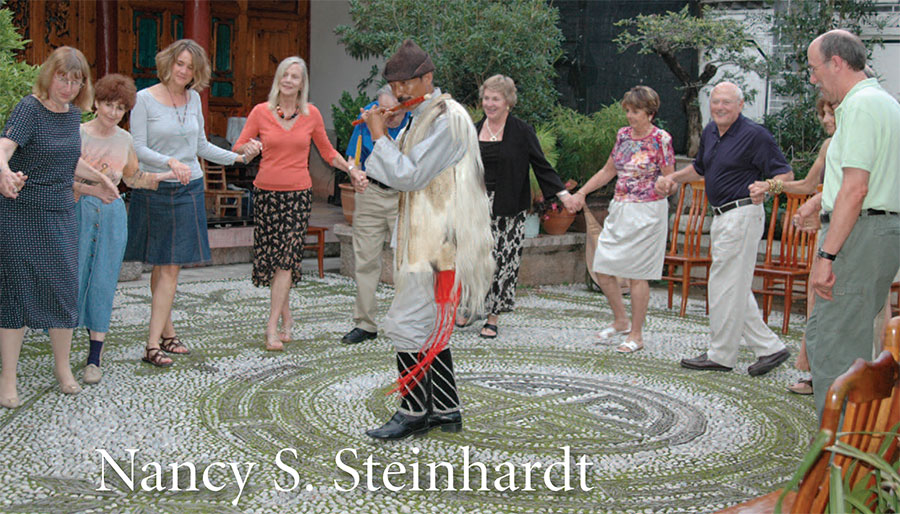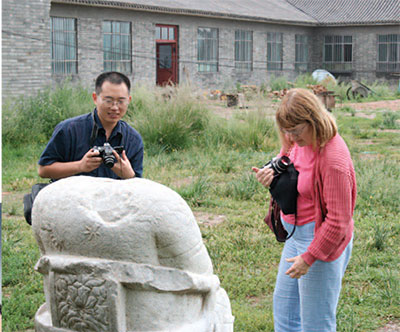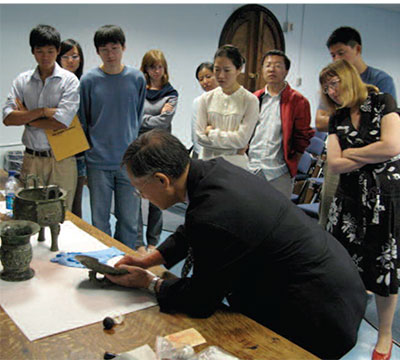
Penn museum’s curator of Chinese Art in the Asian Section, Nancy S. Steinhardt, began studying Chinese while attending the Mark Twain Summer Institute in St. Louis when she was 13 years old. This experience opened up new and exciting vistas centered on East Asia, and Steinhardt continued learning Chinese throughout her high school years by enrolling in a weekend program offered by Washington University in St. Louis. She has since then been dedicated to East Asian studies and particularly interested in how the use of Asian symbolism, art, and architecture offers insights into the formation of empires.
Steinhardt entered Washington University in St. Louis as an undergraduate well-versed in Chinese language. As a freshman, she took courses in art history and soon merged her interest in Chinese language with Asian art. After graduation from Washington University in 1974, Steinhardt entered the graduate program in the (then) Department of Fine Arts at Harvard University. During her last three years of graduate studies at Harvard (1978–81), Steinhardt was selected as a Junior Fellow in the Harvard Society of Fellows, one of the most prestigious awards in the world. She was one of eight such fellows, chosen from individuals globally, and, to date, the only junior fellow in Chinese Art. Steinhardt was awarded a Ph.D. in Fine Arts from Harvard in 1981.

Following graduation, Steinhardt taught at Bryn Mawr College from 1981 to 1983. She also began to teach at the University of Pennsylvania in 1982 through its, then, College of General Studies. In 1983, Steinhardt became Lecturer and subsequently Assistant Professor in East Asian Art to replace Schuyler Cammann, the distinguished Professor of Oriental Art, upon his retirement from Penn. She became Associate Professor in 1991 and Associate Curator of Chinese Art in the Museum’s Asian Section in 1994. Steinhardt was promoted to Professor and Curator in 1998.
At Penn, Steinhardt has focused on three areas—teaching, academic integration across the university, and research. She is dedicated to hands-on experiences for students in her classes and believes that the use of objects is central to teaching. To this end, she actively engages undergraduates in her courses (East Asian Art and Civilization, The Arts of China, and Chinese Painting) through trips to the Museum, where they examine objects from the collections in storage or those on display in the Harrison Rotunda. These types of experiences, which lend an up-close and personal touch to learning, are also features that Steinhardt uses in broader outreach activities, such as the 2007 trip to China which she led for the Museum’s Women’s Committee.
Steinhardt’s primary research interests are in Chinese architecture and archaeology. As a graduate student, she became interested in the Mongol period and the issues of how a semi-nomadic people (the Mongols under the leadership of Khubilai Khan) were able to build an empire and legitimize their rule through the appropriation of aspects of Chinese art, architecture, and symbolism. The imperial city of Dadu (now Beijing), built by Khubilai, was the focus of her Ph.D. thesis. Yet, until it became possible for scholars to conduct research in China in the late 1970s, Steinhardt was unable to study the architecture firsthand. Since then, she has traveled from province to province and to all of China’s borders to study the architecture of the period of Mongol rule of China and other dynasties.

Her interests in Asian empire building and political legitimization by semi-nomadic peoples led Steinhardt to study architecture, art, and symbolism along the northern borders of China during the Liao Dynasty (AD 947–1126). The University of Hawaii Press published her study, Liao Architecture, in 1997. Considered the leading scholar of Chinese architecture outside of China, Steinhardt is also Chief Editor of the authoritative, Chinese Architecture, published by Yale University Press in 2002. She is currently studying the 3rd through 6th centuries AD, another period when China was not united and when some 20 or more empires and kingdoms were using aspects of architecture and art to claim legitimacy.
The pace of research in East Asia (Steinhardt works not only in China, but also in Japan and Korea) has been accelerating in recent years, with discoveries in archaeology and architecture occurring so rapidly that existing interpretations must be constantly reappraised. Steinhardt is at the forefront of the effort to keep current and to anticipate the new directions in which these discoveries will lead—a challenge she eagerly welcomes.
